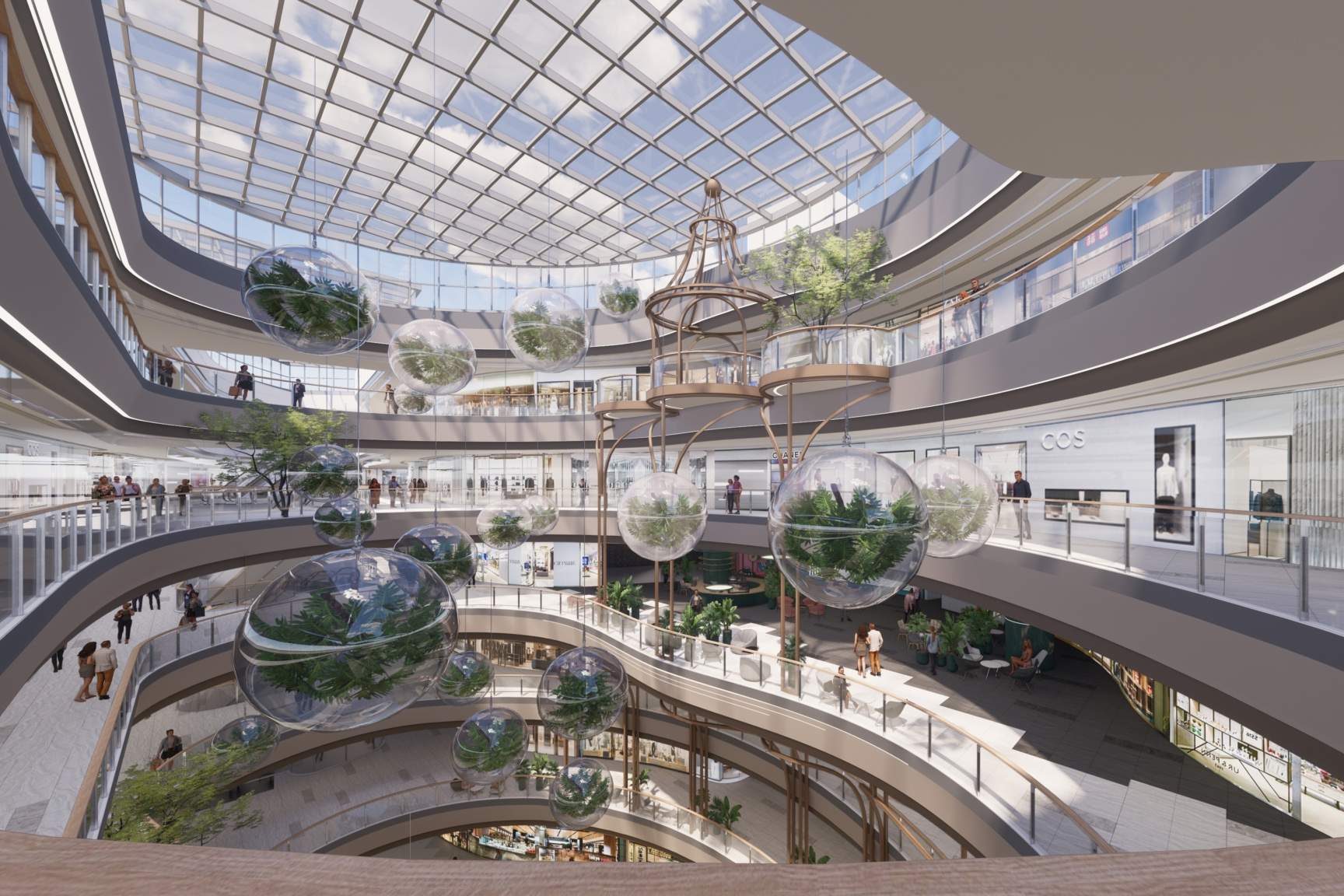HNC – Human-Nature Connectedness. The more urban we become, the less we connect with nature. More than ever, our everyday actions, the way we run our businesses, the standards we adopt in regard to sustainability, are being questioned and scrutinised. As managers and developers of the most popular community focal points, we need to be aware of consequences.
The progressive loss of human contact with nature has been referred to as the ‘extinction of experience’. Improving our ‘Human-Nature Connectedness’, or HNC, has been found to directly correlate to how we view the world and can be used as a leverage point for sustainability. In simple terms, if we are connected to nature, we have more compassion and empathy for all living things in the natural world. The extent to which humans see themselves as part of nature drives the mindset that values sustainability and the associated behaviours that enhance it.
With healthy HNC, humans hold concern for the loss of biodiversity, feel compelled to limit global warming and are drawn to create a sustainable, equitable world. If we have low HNC that is associated with an anthropocentric view of humans being the most important element of existence, the opposite occurs – we devalue nature and we develop destructive practices towards nature. With low HNC, humans become psychologically and physically disconnected. Environmentally concerned authors argue that anthropocentrism is ethically wrong and is the root cause of the global ecological crisis.
It is clear the health and wellbeing of humans depend on the health of our natural environment. However, here lies the rub. With more than 55% of the world population living in urban areas, a figure that is steadily climbing each year, there is an increasing disconnection of humans to our natural habitat. Add to this the fact that we work one-third of our lives and spend 90% of our time in the built environment; the negative influence on human wellbeing is self-evident. The consequences of the loss of natural experiences reach beyond health and wellbeing and extend to our emotions, attitudes and behaviour towards nature.
So, how does all this relate to the business of retail?
Clearly, there is increasing attention being paid to sustainability topics in business, reflecting a higher level of exposure to corporate environmental, social and governance (ESG) practices. This is more than just mere box-ticking or an obligation to be seen to be doing the right thing. Leading companies are embracing the concept of HNC and sustainability as a core ethos that influences all decision-making, especially that of design.

The HexAudi carbon-negative facade panel system
A prime example of this is the German auto company Audi, which has partnered with ‘Made of Air’ to pioneer the HexAudi façade panel system for the exterior of its dealership piloted at Trudering-Riem, an outer suburb of Munich. In simple terms, the façade sucks in carbon from the atmosphere. The product is a combination of Made of Air’s proprietary biochar, the key carbon-negative element, and bio-based polymer binders. The result is granular materials that can be thermoformed using existing processes. In effect, this material is a permanent carbon sink that goes beyond reducing embodied emissions, providing the double benefit of carbon removal and avoided emissions. For the Audi application, ten tonnes of CO2 have been sequestered from the atmosphere.
In terms of sustainability, the basic premise is simple – everything humans make has an impact on the planet. If consumers know the environmental impacts of the products they buy, they will more than likely want to choose the one that is the most sustainable and has the least amount of negative impact (given other factors such as price, convenience, availability and longevity are comparable).
In the circular design economy, more than 70% of environmental impacts are locked at the design stage before anyone ever purchases a product and well before reuse or disposal is considered. Forward-thinking organisations have an ‘Earth-First’ approach to how they operate.
The global fashion business is one of the worst offenders in terms of waste, producing a collective 150 billion items of clothing each year – far in excess of a global population of 7.9 billion. The apparel industry creates a lot of trash – some 10.5 million tonnes per year, with 85% of clothing ending up in landfills or being incinerated.

Fashion brand Tentree has vowed to plant one billion trees by 2030
A tangible example of change in this sector is the fashion brand Tentree, which has vowed to plant one billion trees by 2030 and is well on its way, having planted more than 105 million to date, fulfilling its mantra that ten trees are planted for every single item of clothing sold. Add to that Tentree’s sustainable apparel is made with hemp, organic cotton, recycled polyester and Tencel lyocell (wood pulp fibre). Its clothing production uses less water and less harmful chemicals and adopts less energy-heavy processes – buttons are made of coconut shells and corozo, and zipper tabs are made of cork. Publicity statements like ‘Be an outsider’ or ‘Tiny seeds grow mighty trees’ speak heavily into their positive Human-Nature Connectedness that appeals strongly to its customer base.
High HNC clothing label Patagonia has a rich history in recycling and reusing its products. From initially crafting tools for climbers in California in the 1960s, Patagonia has become a global leader in outdoor clothing while setting an example of how businesses can operate responsibly and support their communities.
‘We’re in business to save our home planet’ is the company’s mission, and this drive to preserve the planet’s ecosystems runs through the entire operation, from the products made and materials used, to donations to grassroots environmental groups through its 1% for the Planet commitment. The core customer base of Patagonia desires to be closer to nature.
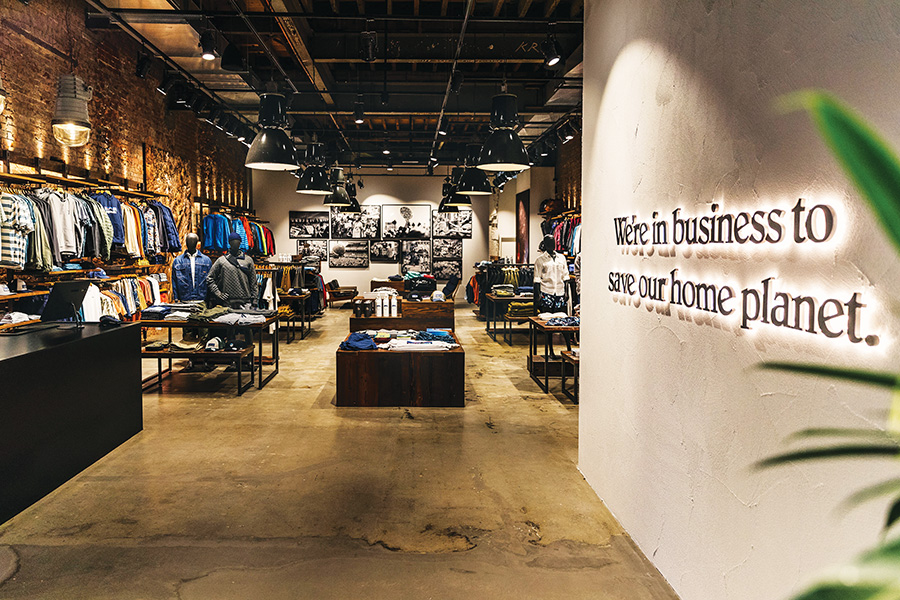
High HNC clothing label Patagonia has a rich history in recycling and reusing its products
Shopping centres can play a key role in shaping environmental sustainability and can inspire the people who use them to be more ecologically minded.
A well-designed shopping centre can promote good indoor air quality, give access to direct sunlight, use natural materials and promote proximity and interaction with nature and greenery.
Global architectural practice Chapman Taylor is creating ‘nature-inspired’ retail environments to entice visitors through the incorporation of bringing the outside natural world inside the malls. Their design for Futureland Shopping Mall in Taizhou, China, heralds an ecological theme that includes large suspended luxuriant plants and natural materials that appeal to a universal human need to be closer to nature and encourage activity and wellness. At the Vanke Kunming Yinhaiboan Mall, the central theme is local flora and fauna where natural, organic forms such as butterfly shapes, lush vegetation and the sounds of nature, such as a gentle breeze, running water and birds singing, create sense of calm and wellbeing for visitors.
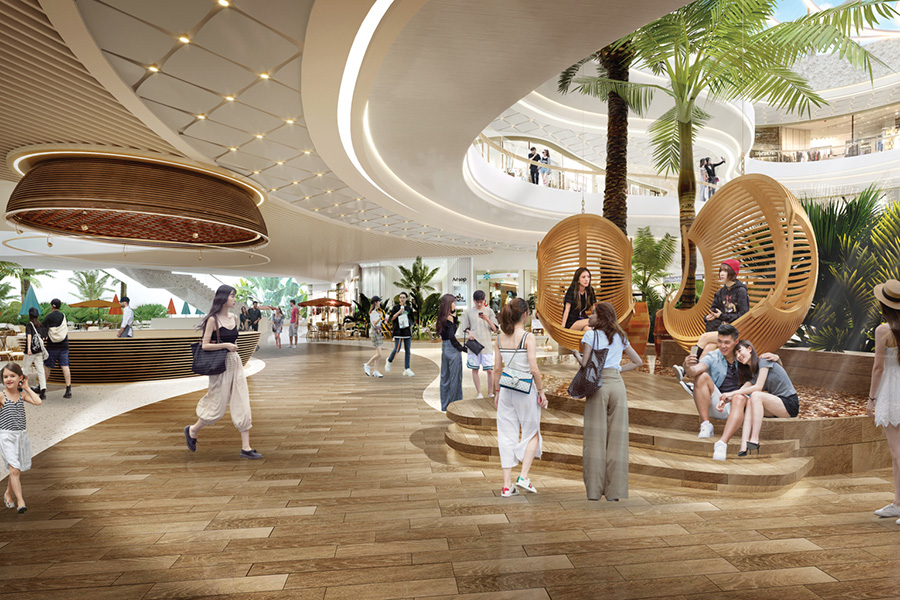
Futureland Shopping Mall in Taizhou, China
Apart from the potential of increasing sales and creating positive brand association by incorporating biophilic design attributes, the creation of workplace environments with high HNC directly translates to improved productivity and creativity, heightened job satisfaction and a commitment to employee welfare. A positive corporate brand image generated through exposure to nature attracts like-minded employees who believe the company they work for aligns with their personal values. High HNC is positively impacted with naturalist knowledge, time spent in outdoor spaces, engagement in mindfulness, happiness and good health. This translates to a more humanistic customer base with pro-environmental values and a higher sense of being part of communities within society.
In terms of construction, there is a rise in the interest of how biopolymer materials can be used as a viable alternative to traditional and synthetic building products. American-Israeli designer Neri Oxman says, “good design can replenish nature rather than exploit it”.
Oxman has pioneered a creative practice that combines design, biology, computing and materials engineering. She defines her work as ‘material ecology’ and seeks to promote the relationship between nature and humanity from consumption on the one hand to preservation on the other to one that embodies complete synergy. Her groundbreaking work entitled Aguahoja – utilising water-based digital fabrication – sees the creation of architected building materials – materials that take on new properties through the interplay of chemistry and geometry – to form organic composites, demonstrating the power of using natural materials to create large-scale 3D printed panels that can be assembled into functional and structural built forms.
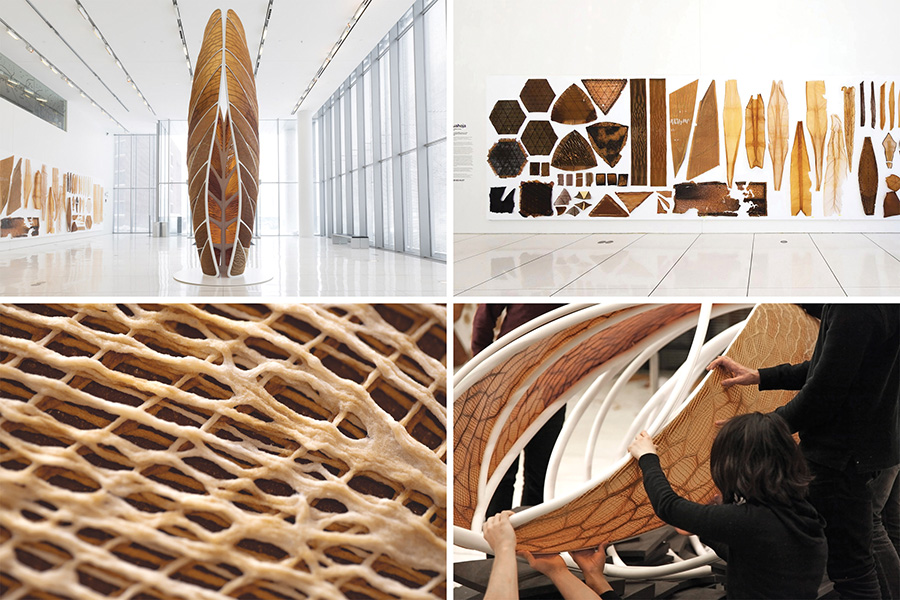
Aguahoja by designer Neri Oxman
It’s a bit scary to think that for the first time in our planet’s history that, anthropomass – the mass of human-made goods – now outweighs the biomass – the mass of all living things. The use of biopolymers in building is seen as a potential way to build synergy between nature and humans.
We take more than 100 billion tonnes of raw material out of the fabric of the planet each and every year, and about half of this goes into constructing the built environment. The construction industry creates an estimated one-third of the world’s overall waste and at least 40% of global carbon dioxide emissions. To address this concern, we need to think about the circular design economy that is best adapted to a systems-based filter where property developers, retail and commercial tenants and the associated construction supply chain need to be more integrated.
For example, leasing agreements asking for shopfronts to be regularly refreshed could consider the lifespan of materials or equipment. Construction contracting models could be based on modular and scalable systems rather than a bespoke joinery-based approach that is not readily reusable or adaptable.
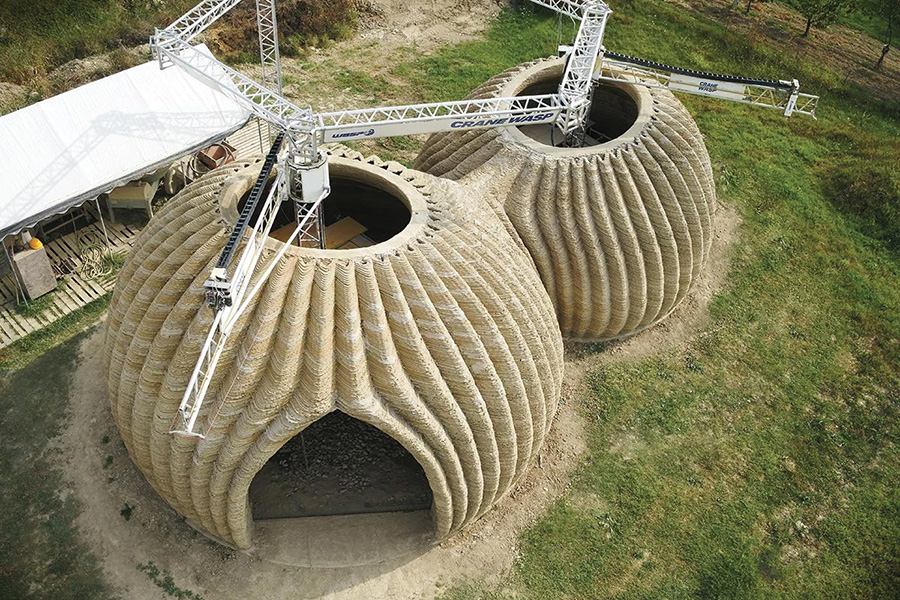
TECLA 3D printed house in Ravenna, Italy
Humans have a responsibility to move beyond the maintenance of our planet towards a position of healing. Sustainable goals will not be achieved without ‘transformational change’. This conversation starts at the top, in the boardroom and in the universities, where policy sets in place the process of design that, in turn, leads to action. HNC can be enhanced with simple interventions – the greening of our environments, education in schools, outdoor education, practising mindfulness and being waste-conscious. A throwaway mentality doesn’t bode well for our planet. Why don’t we reuse what we already have rather than gouge the planet for more raw materials? As Richard Branson stated: “There is no planet-B. We have to take care of the one we have.”
This article features in the latest issue of SCN magazine.


